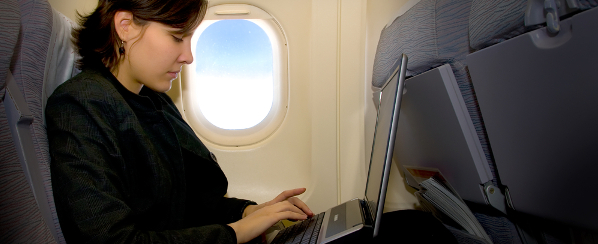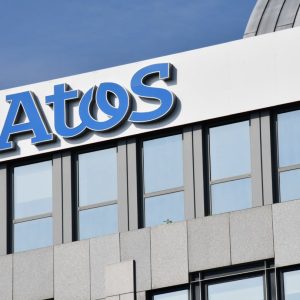
Would you choose an airline based on its connectivity charges?
As the world of business becomes ever more international which airlines provide connectivity and how much does it cost?
Here are ten examples stretching from Aeroflot to South West Airlines.
Lufthansa
The German carrier has FlyNet, its ‘limitless communication service’, installed across 91% of its long-haul aircraft. Provided by its partner Panasonic Avionic Networks, it allows both Wi-Fi and 3G/4G connectivity (but no voice calling, following the results of a customer poll) making Lufthansa the largest internet-enabled long-haul fleet in the world.
The service, available across its A380 fleet, connects automatically when a customer accesses the internet on-board, with a special FlyNet portal offering all the latest news, weather, and information on current Lufthansa flights. However, the service automatically disconnects on any services flying over China due to local laws that turn it off when entering Chinese airspace.
Travellers in all classes can also enjoy the airline’s free live TV channel, Sport 24, which offers highlights of football, tennis, Formula One and golf, which will either be integrated into the in-flight entertainment portal or available to stream over a Wi-Fi device.
Customers can access mobile Wi-Fi if their operator has a roaming agreement with the service provider on board, AeroMobile, with billing done through a customer’s native operator. Customers of Deutsche Telekom or one of its affiliated roaming partners (including T-Mobile and EE) can pre-register before their flight, allowing them log on easily and conveniently with your access data when on board.
Lufthansa is also currently running a promotional offer with German operator Deutsche Telekom (also known as T-Mobile), with a HotSpot Sky pass for two hours of on-board Internet access available for only €9 instead of the usual price of €10.95 an hour. 24 hour passes can also be bought for those long-haul flights, costing €15.
Singapore Airlines
Another airline that has teamed up with OnAir and Panasonic, Singapore Airlines offers Wi-Fi connectivity aboard its A380 and Boeing 777-300ER fleet, as well as the older A340-500 aircraft. The airline, which was the first to introduce satellite-based in-flight telephone service in 1991, spent $50m on upgrading its fleet in 2012 as part of its In-Flight Connectivity Programme.
The service operates when the aircraft is at cruising altitude and is flying over international waters or authorised countries, meaning certain routes might see drop-offs in connectivity. Users can also send and receive SMS text messages with GSM-compatible mobile phones.
With both operators providing services, price plans vary depending on which flight is taken, and will either be volume-based (e.g. US$9.99 for 10 MB) or time-based (e.g. US$11.95 for 1 hour), with a summary of your purchase being sent to you via email. Customers of Singapore-based StarHub can also enjoy a special discount, accessing unlimited data for just S$25 a day.
The airline also offers a personal in-seat telephone which allows travellers to make calls to virtually anywhere in the world via a global satellite network, as well as letting you to make seat-to-seat calls free of charge.
JetBlue
New York-based Jet Blue, which runs low-cost flights primarily throughout the US and Caribbean, offers its Fly-Fi service on a number of its flights, with plans for a full rollout across its fleet later in the year.
Provided in association with LiveTV, Fly-Fi ‘s basic ‘Simply Surf’ plan is currently free to travellers as the company puts it through a beta testing period. However services for bandwidth-heavy applications such as streaming movies and large downloads are available for purchase on the airline’s Fly-Fi Plus plan at $9/hour.
Fly-Fi uses Ka-band technology, meaning it works differently to existing Ku-band satellites, and should in theory provide faster reaction and download times as the network allows higher bandwidth communications. The company is hoping to roll out Fly-Fi to its entire fleet over the course of two years, with several planes installed every month, beginning with its Airbus aircraft throughout 2014, followed by its Embraer E190s.
American Airlines
Although American Airlines uses Gogo’s services, it also provides several deals which are available to customers when below 10,000 feet, although these are the same prices seen in other Gogo-supported airlines – $2 for 30 minutes of mobile-only WiFi access to $49.95 for Gogo’s Unlimited Pass.
It also offers specialised deals for AA flights, however, with the standard AA Traveler pass available for $39.95 per month, and the airline also offers an AA Day Pass which ranges from $14-$21.95 and covers a 24-hour period.
AA also offers WiFi on some of its international flights too, but only on its newest Boeing 777-300ER plane. Internet access for international trips can only be bought on board and is priced at $12 for a two hour pass, $17 for a four hour pass and $19 for access for the duration of your flight.
In-flight domestic WiFi is available on all of its 767-200 and 737 aircraft and most of its MD80 and 757 models too.
Virgin America
Virgin America also uses Gogo’s in-flight service to power its Internet options and provide Web access to passengers on its Airbus A319 and A320 planes.
The network is available on all of its flights throughout the US (although sadly not yet in Europe) and prices range from $2 for thirty minutes access on a mobile device all the way up to a $39.95 per month Traveler pass, accepted on all Virgin America flights but not other airlines that use Gogo’s service. The Traveler pass will get you unlimited access. Pricing packages, including tiers in between, are available once you’ve passed 10,000 feet and can log on to the portal, as is the case with other airlines.
While the service is available throughout the US, passengers flying to Mexico will lose service within 100 miles of the US border.
SouthWest Airlines
SouthWest was the first US airline to install on-board Wi-Fi services, and now offers the largest satellite-based Wi-Fi system in the world.
The bulk of its product is centred around entertainment, with the airline’s dish service providing 19 live channels and up to 75 television episodes from popular series free of charge. The service can be accessed on Windows laptops powered by XP and higher, Mac devices with OSX 10.6.X or higher, Apple devices powered by iOS 4.2 or later, and select Android devices.
Users will need to download the new Onboard Player app for Apple and Android devices (phones & tablets) or the ViewRight Web plugin for those who are watching content through a standard laptop browser.
Internet access is also available for $8 a day per device on WiFi-enabled aircraft.
Airtran Airways
The Florida-based airline, a subsidiary of Southwest, has Wi-Fi hotspots installed on all of its Boeing B717 and B737 aircraft, with in-flight services provided by Gogo available on all AirTran flights departing from US destinations. Passengers can access the network using their Gogo account, and will be able to connect once the plane has reached 10,000 feet.
The network works with virtually any Wi-Fi enabled device that runs Android, Apple, Windows and Blackberry platforms, with supported browsers including Apple Safari, Google Chrome, Microsoft Internet Explorer Mobile (version 8 or above) and Mozilla Firefox.
Hourly passes start at $5, with an all day pass costing $16. Frequent flyers can choose to purchase a monthly unlimited pass for all AirTran flights within that month, which costs $49.95.
Delta Airlines
The US airline offers connectivity through its DeltaConnect service, available on more than 300 flights per day across 700 of its domestic aircraft, with further expansion planned for the rest of the year.
Provided by Gogo, the network covers most of the continental US and parts of Alaska, but not Hawaii. Daily Wi-Fi passes start at $18, with a monthly pass costing $50 and an annual pass coming in at $479.95.
An in-flight Wi-Fi Mobile Pass starts for as little as $1.95, with connectivity available once the aircraft reaches 10,000 feet, with Apple, Android, Windows and BlackBerry devices all supported.
Norwegian Air
The first airline to offer high-speed in-flight broadband across Europe, in March Norwegian Air announced that 74 of its 76 Boeing 737-800 aircraft were equipped with free Wi-Fi, although the service is not available on its long-haul flights.
Supplied by Californian firm Row 44, passengers can connect quickly and easily when in the air, with the Ku-band network provided via satellite to two antennas connected to the plane. The service is currently offered on nearly 500 aircraft flying around the world, and is by far, the largest deployed satellite-powered system of any in-flight entertainment provider.
The airline’s network has won several awards, including the Passenger Choice Awards 2013 for "Best Inflight Connectivity and Communications". It was also the first to offer its passengers a video-on-demand service directly to their Wi-Fi devices, with users able to access games, shopping, interactive flight maps and destination services as well as watching films and television shows on their devices.
Aeroflot
The Russian carrier, which transports over 15 million passengers a year to more than 100 destinations, has been offering in-flight Wi-Fi since December 2012, with connectivity available on 16 of its A330 aircraft and 10 of its B777 planes. The airline has also promised to continue the roll out to the rest of its 128-strong fleet.
Provided by OnAir, the "Internet on board" service can be purchased whilst in the air, with price plans starting at $2.44 for 1MB and then $2.70 for further access on laptops and $2.67 and $2.70 respectively for smartphones.
Alternatively, passengers can buy a 3MB or 9MB smartphone bundle for $9 and $22 respectively, with laptop users able to get either 9MB or 19MB for $22 and $40 respectively.
Passengers who are customers of Russian operator MegaFon can also make and receive calls during the flight, as well as being able to send and receive SMS or MMS messages whilst in the air.






